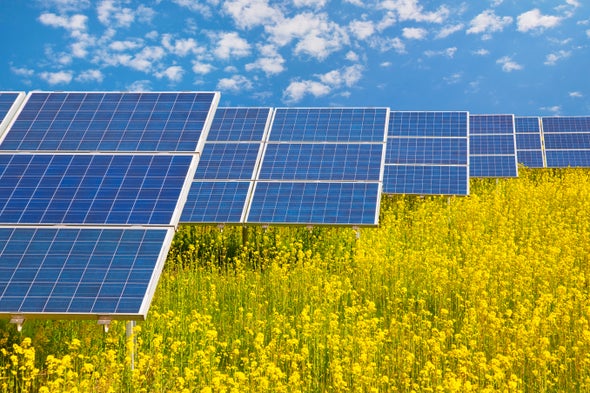Renewable energy reaches a new level despite the impact of the pandemic

The IEA has forecasted green energy to put an end to the dominant position of coal by 2025.
According to a recent study by the IEA, global renewable electricity installation figures will reach a record level this year, contrasting to the significant declines in the fossil fuel industry as a consequence of the pandemic.
The IEA reported that nearly 90% of all new electricity generation this year will come directly from renewable energy, with only 10% coming from gas and coal. The findings mean green electricity is well on the path to becoming the biggest power source by 2025, removing coal from its leading position that it has maintained for the last 50 years.
The rising awareness and recognition of how critical the climate challenge is and its association with emissions reductions have made renewable energy very appealing to global investors. The IEA reports that share in renewable energy manufacturing and project development has exceeded the majority of other leading stock market indices. The IEA also highlighted that share values in solar businesses have more than doubled since the end of 2019.
The US is currently one of the biggest markets for renewable energy, and the IEA suggests deployment of renewables could increase further if the policies promised by the president-elect Joe Biden are implemented. Fatih Birol, the executive director of the IEA, explains that renewable energy has and continues to defy the challenges caused by Covid-19, indicating the robust growth and resilience of the market compared to other energy sectors. The resilience and benefits of the industry have proven to be a driving interest for global investors. In contrast, the fossil fuel industry has had a very challenging year as pandemic-related measures impacted overall demand from the transport industry and other sectors to decline considerably.
The IEA believes that by 2025, renewable energy will become the largest source of electricity generation worldwide, supplying nearly a third of global electricity demand. IEA data suggests that solar energy capacity has increased by 18 times since 2010 and wind power by a further 4 times. The IEA predicts that renewable energy capacity will increase by as much as 200GW in 2020, driven mainly by China and US developers competing to take advantage of incentive schemes that are soon to come to an end.
Birol emphasises that while renewable energy has proven to be resilient to the Covid crisis, it can be impacted by policy uncertainties. Governments can manage these issues and deliver measures of sustainable recovery and support clean energy development. For example, if the US implements the proposed clean electricity policies as stated by the next administration, then the nation could accelerate the deployment of solar and wind nationwide. At present, studies by the Guardian have indicated that the coronavirus recovery funds are allocating more money towards fossil fuel industries than green energy projects. Jason Eis, chief executive of Vivid Economics, explains that the environment and climate change have failed to be a core element of the recovery plans and, for many nations, it isn’t receiving the attention it deserves.